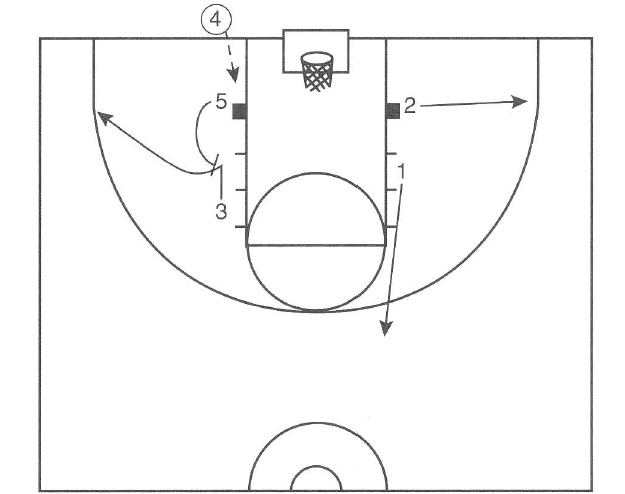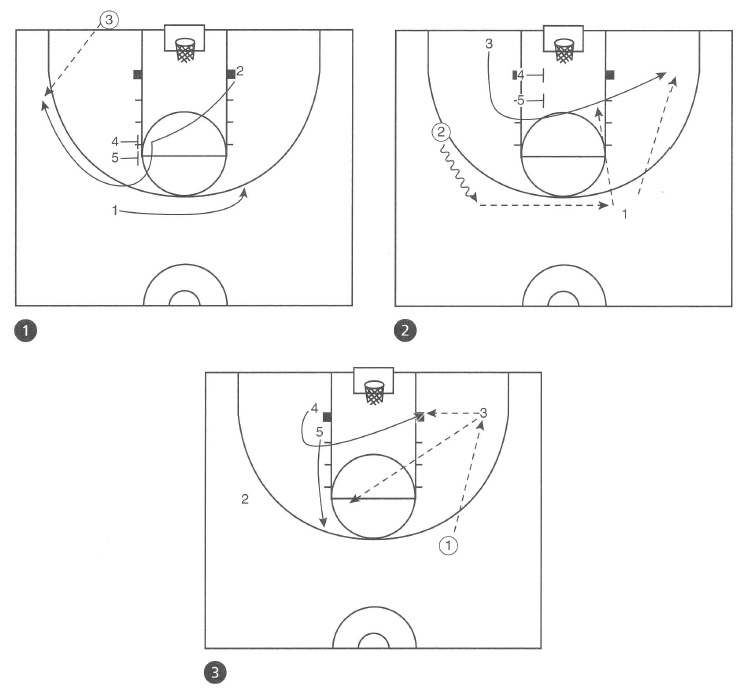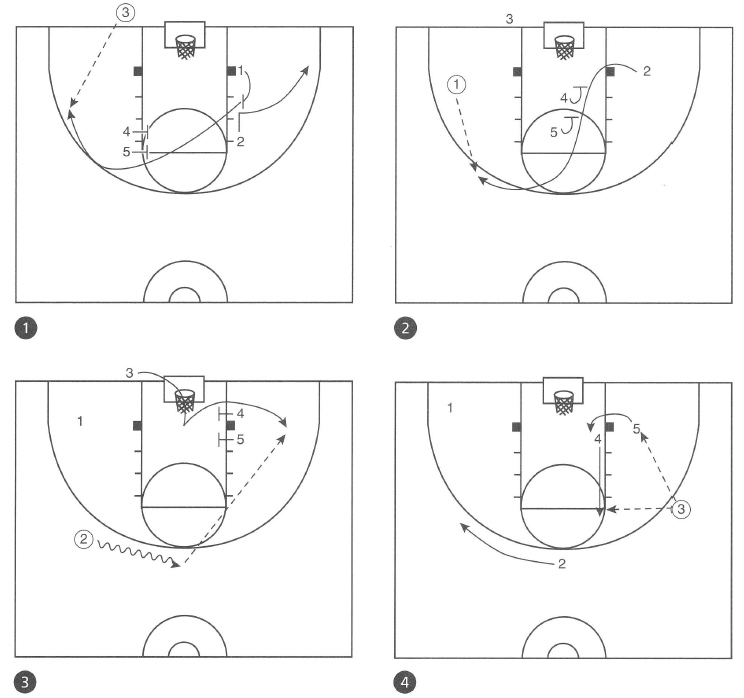| Out-of-Bounds Plays
As any basketball coach knows, out-of-bounds plays can significantly affect the outcome of a game. Not counting the inbounds passes that follow a score by the opponent, a team might inbound the ball one to two dozen times a game. Assuming each possession is worth only two points, a team could easily score 20 to 40 points a game off the sets—certainly enough to win or lose the contest. A team can take the ball out-of-bounds virtually anywhere on the court along a baseline or sideline. The sets in this chapter address each possible scenario, but in every case the inbounds player must be able to read the defense, determine its set, and call a corresponding play. The plays in this chapter cover every conceivable inbounds objective: scoring or getting the ball in safely, featuring every player on the court in at least one set or option, with just a few ticks or many left on the game clock and shot clock, both against man-to-man and zone defenses, when the offense has a significant size mismatch at a particular position, when a defending post player is in foul trouble, and for layups and three-pointers and everything in between. The fundamentals of basketball remain important on out-of-bounds plays—great decision-making, precise passing, posting up, screening, finishing in traffic, outside shooting—although different plays require these skills to varying degrees. An important consideration when compiling your repertoire of out-of-bounds plays is, to the extent possible, they have similar initial alignments prior to live action. Obviously, if each inbounds play calls for a different setup, the opponent will be tipped off on which play you're planning to run. Another strategy when designing out-of-bounds plays, especially those underneath the offensive basket, is to create as much nonpositional screening as possible, meaning a post screens a guard's defender or vice versa. This makes it more difficult for the opponent to switch defenders or to guard effectively in the resulting matchup. Audra Smith Objective To isolate a post player for a quick layup under the basket. When to Use Key Personnel Execution Points of Emphasis  Audra Smith Objective To get 2 a quick shot, 3 a short corner 'jumper, or 4 a post-up opportunity. When to Use Key Personnel Execution
Points of Emphasis  Audra Smith Objective To obtain a quick shot for 1, a three-pointer for 2, or an eventual look for 3. When to Use Key Personnel
Execution
 Audra Smith Objective • To get a layup for 5 or an immediate jumper for 3 • To provide multiple scoring options. When to Use Key Personnel
Execution
Points of Emphasis  WBCA Offensive Plays and Strategies book is published by Human Kinetics. |
|
|






